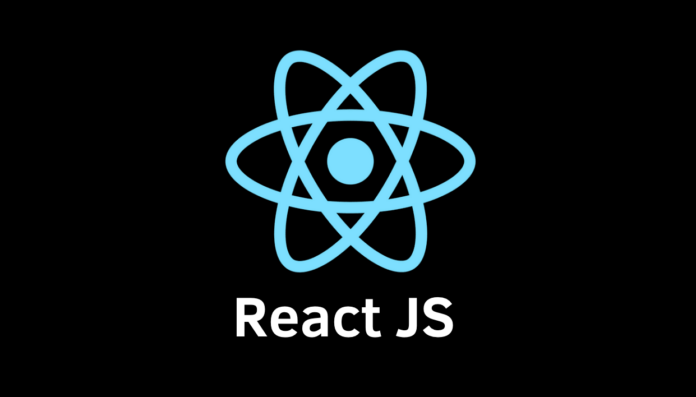
Fundamentally, React stands as a robust library within the JavaScript ecosystem, primarily utilized for crafting interactive and dynamic interfaces for users. Distinct from conventional frameworks, React prioritizes the construction of components that can be reused, thereby streamlining the development workflow and enhancing the code’s maintainability.
React was Facebook’s internal project in 2011, designed to address the specific need for a tool that could build dynamic user interfaces with high efficiency. The library was open-sourced at the JSConf US in May 2013, which was a significant milestone in the web development community. It not only demonstrated Facebook’s commitment to open-source development but also opened the doors for developers worldwide to contribute and refine React’s capabilities.
React revolutionizes the handling of the Document Object Model (DOM) by employing a virtual DOM, which significantly enhances rendering efficiency and boosts overall application performance. This method enables developers to update user interfaces more effectively, resulting in applications that are both smoother and more responsive. Consequently, React has emerged as a preferred option for numerous developers and corporations, Evrone included, especially when React development outsourcing for their web initiatives.
Benefits of Using React.js Framework

React.js’ unique features and benefits make it an ideal choice for both developers and businesses looking to build flawless web applications.
- Component-based architecture ─ React’s core strength is its component-based structure. It allows developers to build encapsulated components that manage their own state, then compose them to create complex user interfaces. The reusability of components helps in maintaining consistency across the application.
- Intuitive JSX syntax ─ React uses JSX, a syntax extension that allows HTML to be written within JavaScript. This blending of HTML with JavaScript provides a better way to describe the structure of the user interface, which leads to code that is easier to read and maintain.
- Enhancing performance with virtual DOM ─ React employs a virtual DOM, essentially a streamlined replica of the real DOM. This approach allows React to ascertain the optimal method for updating the browser’s DOM, resulting in enhanced performance and a more fluid user experience, especially in applications that are dynamic and experience high traffic.
- Strong community support and ecosystem ─ Being an open-source library, React has a vast and active community. This means a rich ecosystem of tools, extensions, and reusable components. Developers have access to a variety of resources and support, which facilitates quicker and more efficient development cycles.
- Seamless integration and flexibility ─ React can be easily integrated with other frameworks and libraries, which allows for great flexibility in project development. This adaptability makes React suitable for a wide range of projects, from small-scale applications to large, complex systems.
- Improved development efficiency and debugging speed ─ With React Developer Tools, developers can inspect and debug their code more efficiently. This significantly reduces development time and enhances code quality.
- Backed by leading tech companies ─ React’s credibility is bolstered by its adoption by tech giants like Facebook and Instagram, which speaks volumes about its reliability and robustness.
Pioneers in React.js ─ The Famous Examples

React.js has been adopted by a lot of projects and companies, from small startups to tech giants. This adoption is a testament to its capabilities and effectiveness in building dynamic user interfaces. Let’s explore some notable examples of who uses React.js.
- Facebook ─ As the birthplace of React.js, Facebook is a great example of its capabilities. The social media giant utilizes React for various parts of its web application, especially in managing the dynamic and interactive parts of its site. The user-friendly interface of Facebook, with its real-time updates and interactive features, is powered significantly by React.
- Instagram ─ a subsidiary of Facebook, utilizes React.js to deliver an engaging and fluid user experience. The platform’s mobile-centric design, which includes functionalities such as stories, direct messaging, and evolving feeds, exemplifies React’s versatility and effectiveness in managing intricate user interfaces.
- WhatsApp Web ─ This popular messaging platform uses React to offer a responsive web version of its mobile application. The use of React.js allows WhatsApp Web to maintain a consistent user experience with real-time communication capabilities.
- Netflix ─ The streaming service giant, Netflix, turned to React for its high-performance and modular structure, enabling a faster and more efficient user interface. React’s ability to handle rapid changes and updates is crucial for Netflix, ensuring a great streaming experience for millions of users worldwide.
- Asana ─ This project management tool uses React’s capabilities to manage its complex application structure, providing an interactive experience in managing tasks and workflows.
- New York Times ─ The famous newspaper has incorporated React.js into its web development to handle the dynamic loading of news stories and interactive features, ensuring a fast and responsive UX.

Conclusion
As we reach the end of our exploration into the world of React.js, it’s clear that this isn’t just another tool in the developer’s pocket. React.js is a testament to human ingenuity and the endless pursuit of better, more efficient ways to build digital experiences.
React.js distinguishes itself not merely through its technological merits but also embodies a philosophy — one that finds simplicity within complexity and elegance in functionality. This approach prompts developers to adopt a novel perspective on user interfaces, encouraging them to perceive them not as a jumble of mismatched elements, but rather as a harmonious assembly of components, each resonating perfectly with the others. In essence, this encapsulates what react programming language ─ a tool that redefines the orchestration of user interface components.
React’s adoption by giants like Facebook and Instagram isn’t just a nod to its capabilities but a reflection of a broader shift towards interactive, user-centric web experiences. For companies, React.js isn’t just a choice; it’s a gateway to creating web applications that resonate with users, applications that are not just functional but memorable.
In sum, React.js isn’t just about building web applications. It’s about reimagining what web applications can be.











